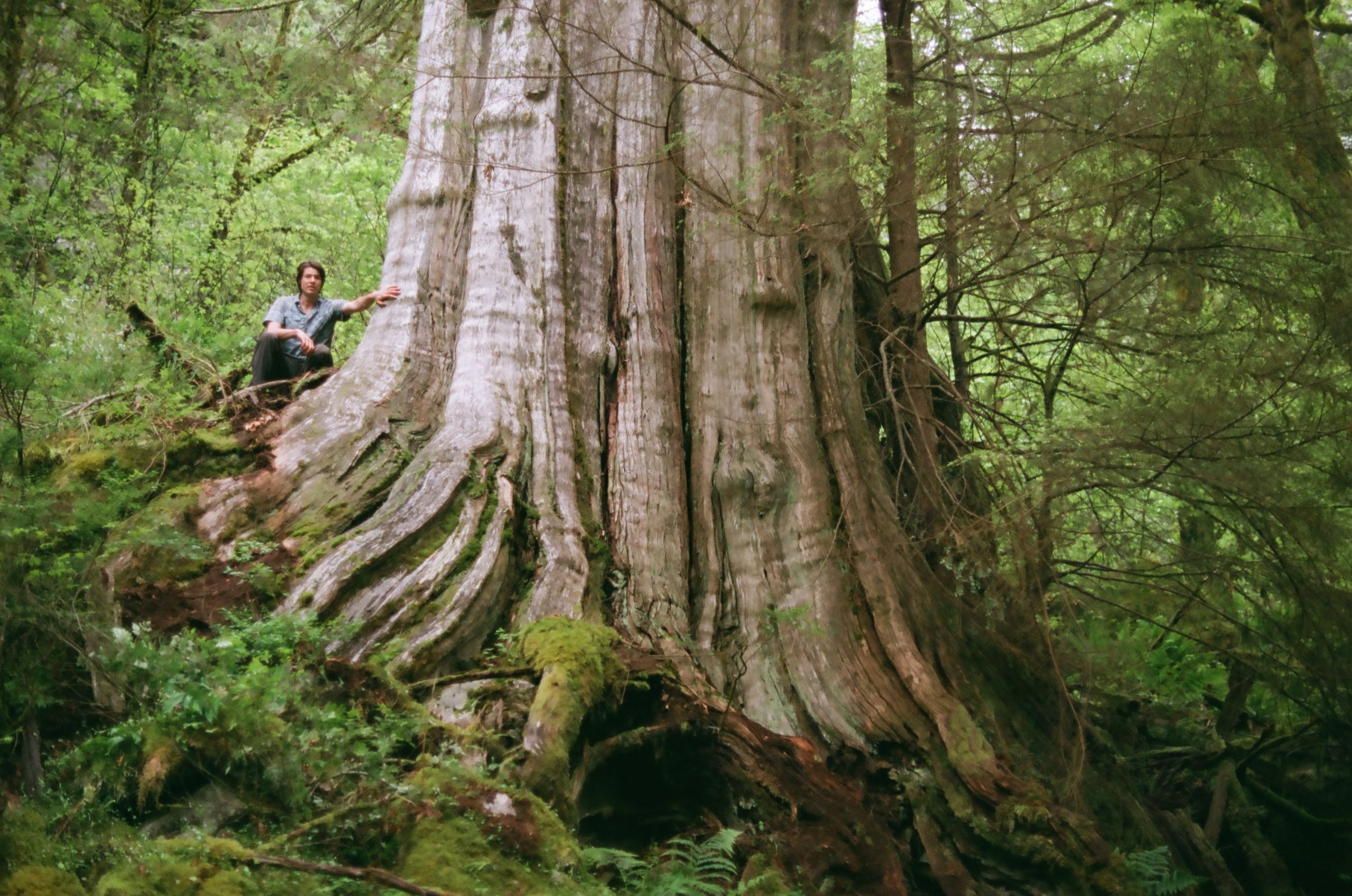What I see when I look at this great historic picture:
-The hewn surface shown was done with a broad axe. Almost all of the chips on the ground are what a broad axe produces when the hewn surface is staged in the vertical position (the most work efficient position for log hewing) The small amount of chips at the bottom tell me that the stick was rough hewn to size where it fell, this would reduce the weight for transport, and the chips we see now are only what was left to hew to the finished size. The adze shown looks like a ship carpenters adze with a pin poll and ship carpenter shaped haft, it does not show but I would bet that it was a lipped adze, used across the grain, to dress up any rough spots. I actually don't see any adze chips, but my eyes are not what they used to be.
-The chips do not show flat ends as if a crosscut saw was used to score. A 2 man crosscut the size needed to score a log of this dia. would have a very deep belly that would make scoring more work than using a scoring axe with a 42" haft and a axe with a 32" haft. Also, To use a crosscut you would have to rotate the log between horizontal and vertical, not something I would want to do. I have broad axe hewn 36"+ dia. logs before and the most work efficient way is how that is shown in the early film footage of large dia. log hewing in northern Wisconsin that Square Peg was kind enough to post for me a while back. This is also how I was taught by my grandfather in northern Wisconsin. On smaller dia. logs I have used a 1 man crosscut without much belly to score, when the stick was placed with the to be hewn side up horizontal, and after scoring with the saw, rotate the stick with the side to be hewn to vertical for the broad axe work. But this was an excellent question.
-I think it was a ship keel. I also think that the ships architect is the first guy on the right and the foreman is the old sour faced guy sixth from the right.
Thanks for posting this picture.





